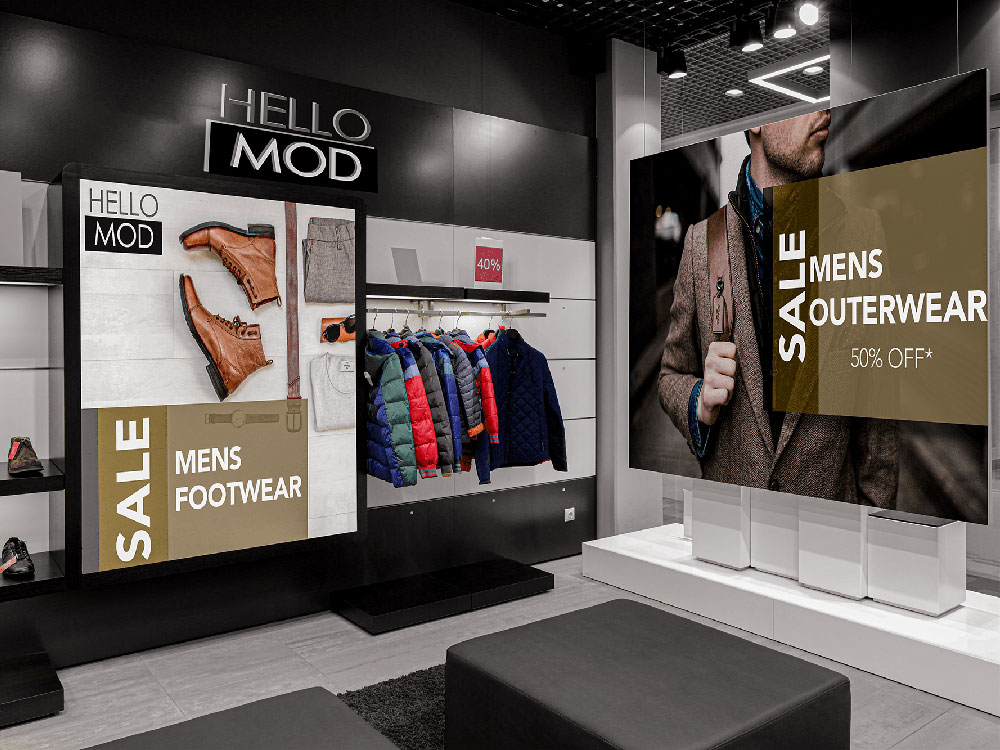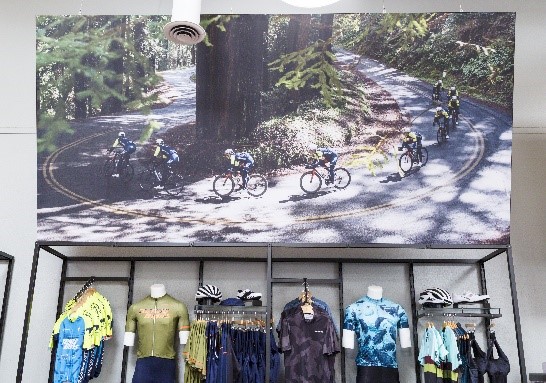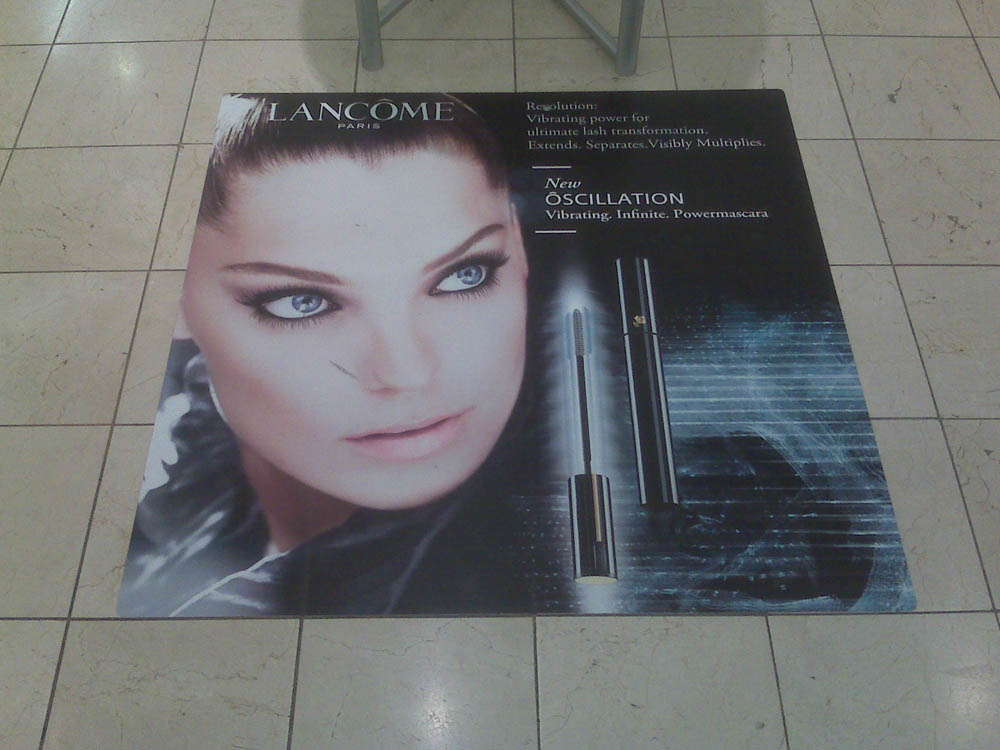At the heart of retail branding is how your customers feel when setting foot into your physical store.
Partner with SpeedPro for all your retail branding and sign needs to connect with your customers and make your store memorable.
Why Retail Branding Is Important
Retailers are no longer just stockers and suppliers of products. They have their own identities and lifestyle choices attached to them. This is why retail branding is so important; it cements your brand identity and allows your customers to form a lasting impression of your product or service.
Branding is more important than ever in a constantly evolving digital retail and marketing age. Customers are literally spoilt for choice in this no-geographical-boundaries, everything-at-your-fingertips retail landscape.
The more strongly your brand identity resonates with your target audience, the more likely they are to choose you over your competitors — and keep choosing you, every time. This is brand loyalty, when a customer defaults to your brand each and every time.
So how do you stand out from the competition?
This is where retail branding comes in. How customers feel inside your store makes a difference in where they choose to shop.
Components Of A Retail Branding Strategy
Not so many years ago, retail branding was a simple, linear process: here is the product, what it does, and why you need it. Today, however, consumers have much higher expectations, and retail brands need to have a 360-degree presence, both online and offline. Digital and physical stores must merge to produce a seamless and engaging experience wherever customers are.
With e-commerce gaining in popularity, brick-and-mortar stores have had to re-adjust their brand concept and image even more.
The Four P’s Strategy of retail branding is applicable to both kinds of customer experience — in-person and online:
Product – First, you must work out who needs your product and why. Defining the qualities of the product or service will aid you in finding your marketing strategy.
Price – Then you must calculate your price point. How much is your target audience willing to pay for it? And does the price point reflect the product’s real and perceived market value?
Place – Where will the product be sold? Online or in physical stores? How will it be displayed and advertised?
Promotion – In this digital age, promotions and special offers are as much online as in-store. However, physical signage and banners are still highly effective. Consumers like to see the same graphics and images for promotions both on their devices and in the store.
Creating A Visual Identity For Your Retail Store
Think of any big brand name. IKEA. Amazon. Walmart. What instantly comes to mind? They all have created very specific color schemes and simple, effective logos.
Say “IKEA“ and their signature blue and yellow signage is conjured up in your mind’s eye almost instantly.
Say “Amazon,” and you probably envision the ‘a to z arrow’ logo long before any images of the rainforest come to mind.
Your brand’s graphic and visual components are known as its visual identity. Everything that consumers can physically see, including the logo and even the interior design of a retail store is part of this visual identity.
When a customer steps into your store, you want them to feel like they’re stepping into your world.
SpeedPro knows how vital this aspect is to your retail branding. Our experts work with you to create the right color schemes and graphic layouts for a unique, unmistakable visual identity for your retail store that includes:
Signage
Signage is often the very first interaction a potential customer has with your product or service, whether it be the store name above the entrance, window decals in eye-catching high-resolution graphics, large billboards or smaller sidewalk A-Frame signs, or bright and bold banners. Old style, tried-and-true methods of advertising still hold up in this digital world, especially in the retail industry.
 Logo
Logo
Your logo is an essential component of your retail branding strategy. It must embody your brand identity and be simple and unique enough to be instantly recognizable.
Cultural Aspects
To grow your brand internationally, respect for how symbols, colors and designs are viewed and portrayed in other cultures is extremely important. For example, color symbolism varies widely across cultures; white can signify innocence or purity in one culture, but death in another. Other symbols or gestures like the thumbs up or full hand sign have different meanings across different countries as well.
What Is The Difference Between “Branding” & “Positioning?”
Branding is the process of putting your brand onto a product or service.
Positioning is placing that brand into a category in your customers’ minds in relation to others already in that same category.
For example, positioning is your customers choosing your ice cream shop over the ice cream shop down the street. Why? Because your branding creates a fun, interactive and more memorable experience when they come into your shop.
Positioning Strategies
There are many different types of positioning strategies, such as The Three C’s:
Channel: How your customers will interact with your brand. This can be through online channels via social media platforms or in-store via physical signage.
Customer: Once you have zeroed in on who your target market is, you have to tailor your marketing and positioning strategy to suit them and their needs. Once you know where your brand fits into the market, then you can work on differentiation.
One example of this is store brands. Supermarkets often have their own store brand that is positioned across all categories, from packaged food to electrical appliances. Usually, the price point is lower than the competitors’ prices, and the demographic is the already existing customer base.
Competition: Know thy enemy. In other words, know where your brand stands in relation to competing brands in the same category as you. Understand where your brand positioning lands you in the minds of your consumers and then use this knowledge to create a marketing strategy that aims to make your brand stand out.
You need to answer the question “Why should people choose your brand over another?”
Branding Strategies
While a memorable or clever logo is an important part of your brand’s creative visual identity, it alone cannot build a reputation or create the sort of long-lasting customer loyalty and repeat business.
Successful branding is flexible; understand how your consumers’ needs and wants can and will change over time. To successfully brand your product, you need to consider:
Who? Who is your brand aimed at? What’s your target market?
Why? What gap in the current category does your brand fill that others don’t? What’s your ‘something extra?’
Where? Where will your brand fit in the existing market? There are categories and sub-categories to work from, and the placement of your brand in relation to the others already in circulation is one of the most important things to get right.
How much? What’s your price point? Here you need to consider factors such as revenue goals, your branded product’s features, competitors’ prices, current economic trends and, most importantly, consumer demand.
Once you’ve answered these questions, you need to come up with a cohesive brand concept that embodies the essence of your product and work to make it as recognizable as possible, through marketing strategy and visual identity.
Why Work With A Professional To Develop Your Retail Brand Strategy
Developing a successful retail brand strategy is the bedrock of a successful business. A strong foundation rooted in solid marketing initiatives and bolstered with high-quality, long-lasting signage can reinforce your brand identity in your consumers’ minds.
SpeedPro has all your signage and visual identity needs covered, guaranteeing color consistency and sharp graphics across the board:
Large Format Printing – including banners and external/internal store signage.
Window Graphics and Decals – advertise promotions, special offers and time-limited deals to catch the attention of passersby.
In-Store Displays – end caps, shelf pop displays and displays to highlight new products.
Floor Decals – advertise your brand or simply guide customers around the store.
Get in touch with your local SpeedPro studio today to start developing your custom retail brand graphics!




































 Logo
Logo